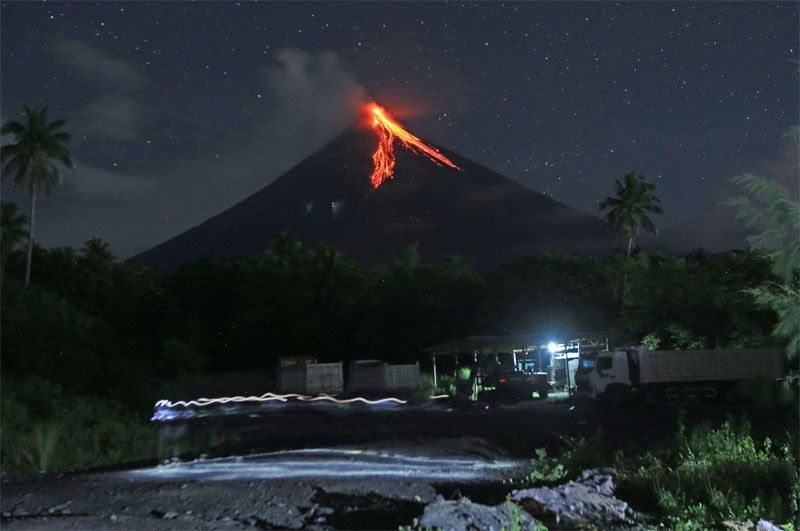Faster lava flow, ashfalls monitored in Mayon

LEGAZPI CITY, Philippines — Mayon Volcano’s abnormal parameters increased anew as faster lava effusion and intermittent ash ejections have been monitored.
Paul Alanis, Philippine Institute of Volcanology and Seismology (Phivolcs) resident volcanologist at the Lignon Hill Observatory in this city, said low-frequency volcanic earthquakes and sulfur dioxide emissions were also monitored until yesterday afternoon.
Alanis said fresh lava had started flowing rapidly from the crater and rolled down to established lava flows along the Bonga Gully in Legazpi City, Mi-isi Gully in Daraga and Basud Gully in Sto. Domingo.
The lava flows reached 600 meters up to 3.4 kilometers from the crater.
“We recorded increases in the values of major parameters as compared to the previous days. This means that Mayon’s abnormal condition remains high but is still within the Level 3 overall status,” Alanis told The STAR.
Mayon has entered its eighth week of lava effusion.
In the past 24 hours, Phivolcs recorded 258 volcanic earthquakes, including a tremor event that lasted for a minute and 30 seconds, 57 ashing events, 100 rockfall events and 2,325 tons of sulfur dioxide emissions.
Alanis said Phivolcs can now monitor the pyroclastic density currents and rockfalls from the volcano after the solar-powered monitoring station within the six-kilometer permanent danger zone began functioning again.
Phivolcs said Mayon remains under Alert Level 3, which means that hazardous eruption within weeks or even days is still possible.
- Latest
- Trending

































